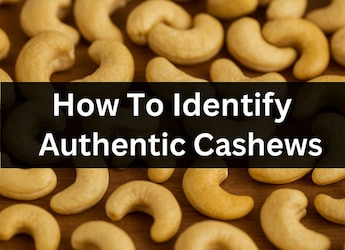In a significant shift, Nestle has announced that it will phase out artificial colours from all its food and beverage products sold in the United States by mid-2026. The move places Nestle alongside other major food corporations responding to growing consumer demand for cleaner, more natural ingredients. Only last week, Kraft Heinz and General Mills confirmed their own plans to eliminate synthetic dyes from their US portfolios by 2027. General Mills, which owns brands such as Betty Crocker, Haagen-Dazs, and Pillsbury, also said it will remove artificial colours from all cereals and food products served in K-12 schools across the US by mid-2026.
Nestle's US CEO Marty Thompson described the decision as a reflection of changing consumer expectations. "Serving and delighting people is at the heart of everything we do and every decision that we make," he said in a statement, reported by the Associated Press.
What Are Artificial Food Colours?
Artificial food dyes are synthetic additives commonly found in packaged foods. These include sweets, soft drinks, cereals, ice creams, and baked snacks. Their purpose is to enhance visual appeal, making products more eye-catching on shelves and more tempting to eat. However, these colours are chemically manufactured rather than derived from natural sources.
How Are Synthetic Food Colours Made?
The first artificial food dye was created in 1856 from coal tar. In modern production, most synthetic colours are derived from petroleum-based chemicals. These additives are processed to meet food safety standards, but their chemical origins have led to long-standing debates around their impact on health.
Artificial colours are used to make foods more appetising.Photo: Pexels
Health Concerns Linked To Artificial Food Dyes
Concerns over artificial food colours are not new, but regulatory action is gaining momentum. In January 2025, US authorities banned the synthetic dye known as Red 3 from the food supply, nearly 35 years after it had already been prohibited in cosmetics due to links with cancer risk. Red 3 had been widely used in sweets, cakes, frozen desserts, icing, and packaged baked goods.
In 2021, California's Office of Environmental Health Hazard Assessment (OEHHA) reviewed several studies and found that synthetic dyes could "cause or exacerbate neurobehavioral problems in some children". Artificial colours have also been linked to increased hyperactivity in children and have raised red flags around cancer and allergy risks.
These findings have triggered increased scrutiny and regulatory pressure on food manufacturers to reconsider the use of synthetic colouring agents.
Natural Colouring Agents Approved For Use
In response to this shift, the US Food and Drug Administration (FDA) has approved three new plant-based colour alternatives, giving food companies more options to create visually appealing products without relying on artificial dyes:
- Galdieria Extract: Sourced from red algae, this natural colourant provides a vibrant blue hue and is suitable for sweets, cereals, smoothies, and ice creams.
- Butterfly Pea Flower Extract: Now approved for savoury snacks like chips, crackers, and pretzels, this extract delivers a deep blue-purple tint.
- Calcium Phosphate: A naturally occurring white additive, ideal for use in white confectionery coatings, chicken preparations, doughnut sugar toppings, and candy shells.
Also Read: FDA Approves 3 Food Colours - And They Are All Natural
These alternatives are not only plant-based but also align with consumer interest in clean labels and more transparent food ingredient sourcing.
Why Are Food Brands Making This Shift?
The move away from synthetic dyes is part of a wider health-first movement across the United States. Campaigns such as "Make America Healthy Again" are pressuring food companies to cut down on synthetic additives and offer more natural formulations.
Nestle's decision is also resonating with consumers. According to an AP-NORC poll, nearly two-thirds of Americans support reformulating processed foods to eliminate additives such as artificial dyes and excessive sugar. States like California and West Virginia have already legislated against the use of artificial food colouring in school meals.
Also Read: DIY Chlorophyll: This Video On Natural Food Colouring Has Everyone's Attention
As larger corporations like Nestle, General Mills, and Kraft Heinz continue to revise their product formulations, a broad shift in the packaged food industry is unfolding. Foods that were once vibrant for the wrong reasons may soon become safer, cleaner, and better aligned with modern nutritional standards.
